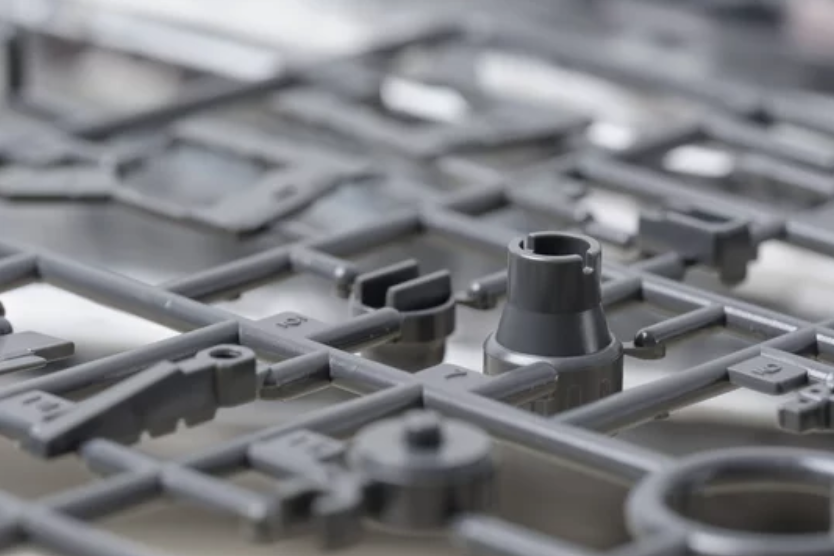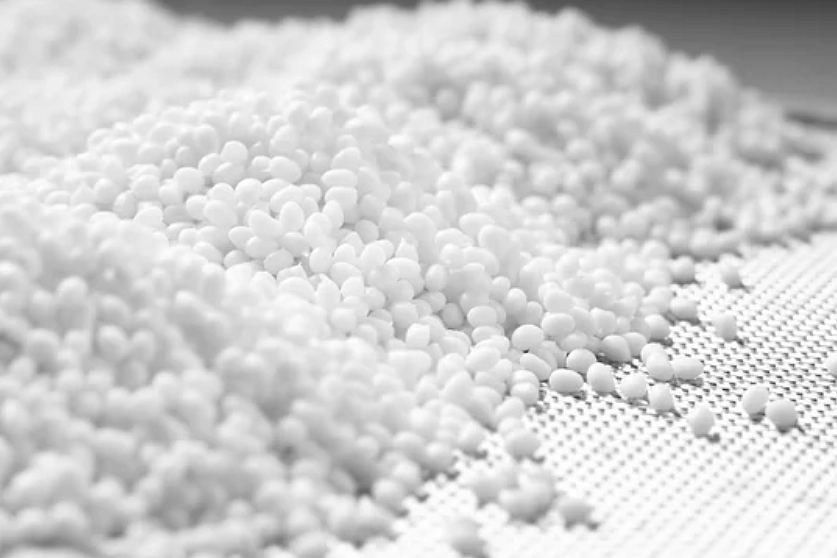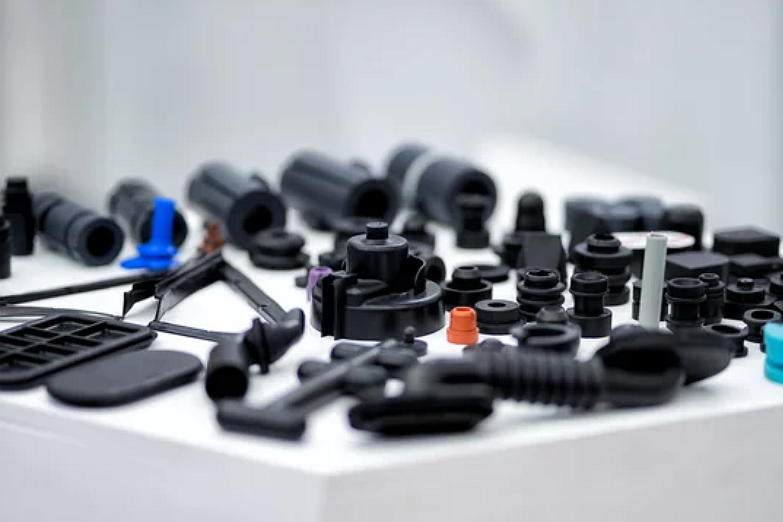Thermoplastics Injection Molding
Thermoplastics can be divided into general-purpose plastics, engineering plastics, and special plastics according to their performance characteristics, a wide range of uses, and versatility of molding technology. Neway's thermoplastics injection molding service offers superb quality, competitive price, fast turnaround, Etc. multi advantages
The main characteristics of general-purpose plastics are wide application, convenient processing, and comprehensive performance.

The characteristics of engineering plastics and special plastics are: specific structures and properties of high polymers are particularly outstanding, the molding processing technology is relatively tricky, Etc., and are often used in professional engineering or particular fields and occasions.
Thermoplastics Materials Optional for Injection Molding
Commodity thermoplastics:
Polyethylene (PE), polyvinyl chloride (PVC), polypropylene (PP), polystyrene (PS), acrylonitrile-butadiene-styrene (ABS)
Engineering Thermoplastics:
Nylon (Nylon), Polycarbonate (PC), Polyurethane (PU), Polyethylene Terephthalate (PET), Polyoxymethylene (POM)
High-Temperature Plastics:
Polyether Ether Ketone (PEEK), Polyimide (PI), Polyetherimide (PEI)
Specialty Plastics:
Polyphenylene Sulfide (PPS), Liquid Crystal Polymers (LCP), Polytetrafluoroethylene (Teflon, PTFE)

Material | Key Features | Typical Applications |
|---|---|---|
PE | Low cost, chemical resistance | Packaging, toys |
PVC | Durability, hardness | Pipes, fittings |
PP | High strength, chemical resistance | Appliances, automotive parts |
PS | Insulating, low cost | Disposable cups, packaging |
ABS | Toughness, easily molded | Appliance housings, auto parts |
Nylon | Wear resistance, low friction | Gears, ball bearings |
PC | Impact strength, optical clarity | Lenses, protective gear |
PU | Cushioning, flexibility | Caster wheels, shoe soles |
PET | Clarity, barrier properties | Beverage bottles |
POM | Low friction, dimensional stability | Conveyor rollers, gears |
PEEK | Extreme temperature resistance | Aerospace, oil/gas industry |
PI | Chemical inertness | Aerospace composites |
PEI | Flame retardance | Electrical housings |
PPS | Chemically resistant | Fuel system components |
LCP | Extremely low friction | Miniature gears |
PTFE | Corrosion resistance, non-stick | Coatings, linings |
Injection Molding Thermoplastic Comparison
Thermoplastic resin selection is a crucial step in developing quality injection molded parts. Comparing critical characteristics of different thermoplastics provides invaluable insights that enable the optimal material to be chosen for an application. Neway's thermoplastic comparison analyzes critical factors from mechanical properties to production costs, shedding light on how candidate resins stack up against the performance, manufacturing, and economic requirements.
Engineers can determine which resin will excel in the application by evaluating metrics such as tensile modulus, heat deflection temperature, melt flow index, and raw material prices across prospective plastics. Materials unfit for the product specifications or manufacturing methods are screened out, saving significant time and costs compared to trial-and-error testing.
Download PDF: Injection Molding Thermoplastic Datasheet |
|---|
Injection Molding Thermoplastic Physical and Mechanical Properties
Material | Tensile Strength (MPa) | Tensile Elongation (%) | Flexural Modulus (GPa) | Flexural Strength (MPa) | Izod Impact (J/m) | Heat Deflection Temp (°C) | Melt Flow Rate (g/10 min) | Shrinkage (in/in) | Density (g/cm3) |
Commodity Thermoplastics | |||||||||
PE | 26 | 500 | 0.7 | 18 | 50 | 65 | 2 | 0.02 | 0.96 |
PVC | 56 | 50 | 3 | 68 | 15 | 70 | 15 | 0.04 | 1.4 |
PP | 36 | 400 | 1.3 | 32 | 60 | 115 | 12 | 0.015 | 0.9 |
PS | 50 | 2 | 2.5 | 60 | 40 | 90 | 15 | 0.5 | 1.05 |
ABS | 40 | 35 | 2.5 | 60 | 400 | 90 | 20 | 0.5 | 1.05 |
Engineering Thermoplastics | |||||||||
Nylon | 85 | 150 | 1.7 | 95 | 75 | 80 | 40 | 0.8 | 1.14 |
PC | 65 | 50 | 2.3 | 100 | 800 | 145 | 25 | 0.6 | 1.2 |
PU | 50 | 300 | 1.3 | 50 | - | 60 | 40 | 1 | 1.2 |
PET | 60 | 150 | 2 | 95 | 50 | 90 | 15 | 0.35 | 1.35 |
POM | 70 | 150 | 2.4 | 85 | - | 100 | 15 | 2 | 1.41 |
High-Temperature Plastics | |||||||||
PEEK | 90 | 40 | 4.5 | 130 | - | 325 | 20 | 0.4 | 1.32 |
PI | 80 | 100 | 3 | 140 | - | 275 | 30 | 0.25 | 1.44 |
PEI | 85 | 75 | 2.5 | 165 | - | 210 | 20 | 0.2 | 1.27 |
Specialty Plastics | |||||||||
PPS | 75 | 5 | 3.5 | 100 | - | 105 | 500 | 0.01 | 1.35 |
LCP | 100 | 3 | 25 | 100 | - | 300 | 30 | 0.5 | 1.4 |
PTFE | 25 | 300 | 0.5 | 20 | - | 95 | 200 | 2 | 2.2 |
Key Features and Applications of Thermoplastic
Commodity Thermoplastics:
Polyethylene (PE):
Key Features: Lightweight, chemically resistant, good electrical insulator.
Applications: Packaging films, containers, pipes, toys.
Reasons: Economic, ease of processing, versatility.
Polyvinyl Chloride (PVC):
Key Features: Good chemical resistance, flame retardant, weatherproof.
Applications: Pipes, cables, automotive interiors, footwear.
Reasons: Versatile, cost-effective, and durable.
Polypropylene (PP):
Key Features: High impact strength, good fatigue resistance, chemically resistant.
Applications: Automotive parts, medical devices, packaging.
Reasons: Lightweight, easy to mold, recyclable.
Polystyrene (PS):
Key Features: Transparent, good dimensional stability, easy to process.
Applications: Disposable cutlery, food packaging, electronic housings.
Reasons: Cost-effective, lightweight, versatility.
Acrylonitrile-Butadiene-Styrene (ABS):
Key Features: Impact-resistant, good surface finish, readily colored.
Applications: Consumer electronics, automotive parts, toys.
Reasons: Strong, durable, aesthetic appeal.
Engineering Thermoplastics:
Nylon:
Key Features: High strength-to-weight ratio, wear-resistant, good chemical resistance.
Applications: Gears, bearings, automotive components.
Reasons: Toughness, fatigue resistance, engineering applications.
Polycarbonate (PC):
Key Features: High optical clarity, impact-resistant, flame-retardant.
Applications: Eyewear lenses, automotive headlamp covers, electronics.
Reasons: Transparency, toughness, thermal stability.
Polyurethane (PU):
Key Features: Flexible, abrasion-resistant, excellent cushioning properties.
Applications: Seals, gaskets, footwear, automotive components.
Reasons: Versatility, comfort, shock absorption.
Polyethylene Terephthalate (PET):
Key Features: Strong, transparent, excellent barrier properties.
Applications: Bottles, food containers, textiles.
Reasons: Lightweight, recyclable, clarity.
Polyoxymethylene (POM):
Key Features: Low friction coefficient, excellent dimensional stability, and a good electrical insulator.
Applications: Gears, bearings, medical devices.
Reasons: Wear resistance, low friction, precision.
High-Temperature Plastics:
Polyether Ether Ketone (PEEK):
Key Features: High-temperature resistance, excellent chemical resistance, strong mechanical properties.
Applications: Aerospace components, medical implants, industrial equipment.
Reasons: High performance, extreme conditions, durability.
Polyimide (PI):
Key Features: Exceptional heat resistance, excellent dielectric properties, low outgassing.
Applications: Aerospace components, electronics, semiconductor manufacturing.
Reasons: High-temperature stability, reliability, low thermal expansion.
Polyetherimide (PEI):
Key Features: High strength, excellent electrical properties, good chemical resistance.
Applications: Aerospace parts, electrical connectors, medical instruments.
Reasons: High performance, dimensional stability, flame resistance.
Specialty Plastics:
Polyphenylene Sulfide (PPS):
Key Features: Chemical resistance, flame resistance, high-temperature stability.
Applications: Automotive components, electrical connectors, industrial parts.
Reasons: Harsh environments, durability, electrical properties.
Liquid Crystal Polymers (LCP):
Key Features: High strength, low moisture absorption, excellent dimensional stability.
Applications: Connectors, electronic components, medical devices.
Reasons: Miniaturization, precision, high performance.
Polytetrafluoroethylene (PTFE) (Teflon):
Key Features: Excellent chemical resistance, low friction, non-stick properties.
Applications: Seals, gaskets, non-stick cookware, electrical insulation.
Reasons: Extreme chemical resistance, low friction, non-stick nature.
How to Select Thermoplastic for Injection Molding Parts
Define Requirements and Constraints:
Begin by defining the part's functional requirements, environmental conditions, and constraints. Consider mechanical strength, chemical exposure, temperature resistance, electrical properties, and regulatory standards.
Identify Material Candidates:
Based on the defined requirements, create a list of thermoplastic materials that align with the desired properties. Refer to the categories you've mentioned, including commodity thermoplastics, engineering thermoplastics, high-temperature plastics, and specialty plastics.
Analyze Mechanical Properties:
Evaluate the mechanical properties of the candidate materials. Compare tensile strength, flexural strength, impact resistance, and other relevant properties to ensure they meet the part's load-bearing and performance requirements.
Consider Thermal Properties:
Review the thermal properties of the materials, including heat deflection temperature, thermal conductivity, and coefficient of thermal expansion. Ensure the selected material can withstand the expected temperature variations.
Chemical Compatibility:
Examine the material's chemical resistance to substances the part might contact. Ensure the material remains stable and does not degrade when exposed to specific chemicals or environments.
Electrical Properties:
If the part requires electrical insulation or conductivity, verify the material's dielectric strength, electrical resistivity, and other electrical properties.
Processing and Design:
Consider the part's complexity, geometry, and design constraints. Evaluate the material's ease of processing, flow characteristics, and suitability for achieving the desired part geometry.
Aesthetics and Surface Finish:
If aesthetics are important, assess the material's ability to achieve the desired surface finish, color, and texture. Some materials are more suitable for achieving specific visual effects.
Cost Considerations:
Analyze the cost of the chosen materials, including raw material costs, processing costs, and any additional finishing or post-processing expenses.
Environmental Impact:
Consider the environmental impact of the chosen material, including recyclability, biodegradability, and sustainability.
Prototyping and Testing:
Before finalizing the material, consider creating prototypes using the selected materials. Test the prototypes for mechanical, thermal, and chemical performance to meet expectations.
Consult Experts:
Seek advice from Neway's injection molding experts and engineers knowledgeable about thermoplastics. They can provide valuable insights and recommendations based on their expertise.
Risk Management:
Identify potential risks associated with the selected material, such as potential degradation over time or unforeseen performance issues. Have contingency plans in place to address any challenges that may arise.
Why Neway for Thermoplastic Injection Molding
When it comes to thermoplastic injection molding, my experience with Neway has been exceptional. As a long-time customer, I've witnessed their dedication to quality and precision in every project. The 30 years they've spent in the industry reflect the expertise they bring to the table. Their diverse services cater to various needs, from metal injection molding (MIM) to ceramic injection molding (CIM). Their customer-first approach is awe-inspiring – their 20% discount on the first order is a testament to their commitment to building lasting relationships. Neway's reputation for reliability and excellence is well-deserved.
When OptoTech needed a partner for high-volume injection molding of tight-tolerance polymer components, they chose Neway. Advanced process controls and inspection procedures ensured zero defects. Neway's material selection expertise allowed parts to withstand challenging temperatures and chemical conditions. The ability to scale production and deliver on aggressive deadlines was instrumental in OptoTech's product launch success. According to the CEO, partnering with Neway gave them a competitive edge.
Are you looking to take your product to the next level? We should chat about Neway's thermoplastic injection molding! I guarantee their 30+ years of expertise can meet your plastic manufacturing needs, whether MIIM, PCM, or CIM, you name it. Plus, you can test them out with 20% off your first order. Want to learn more? Just shoot me a message, and let's talk!

评论
发表评论